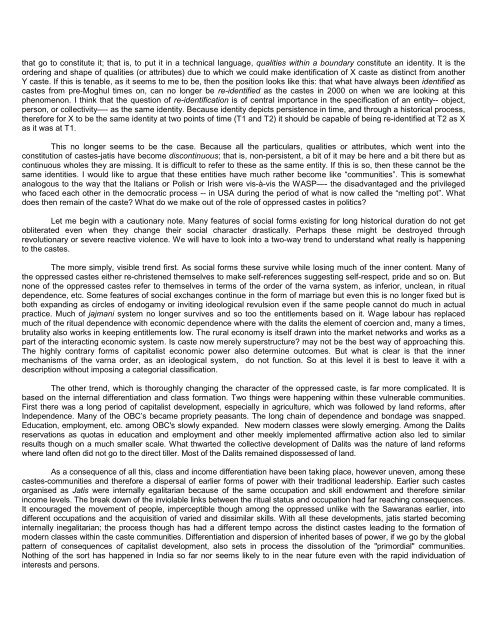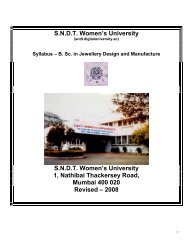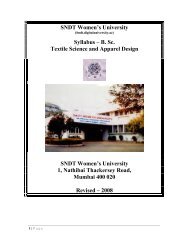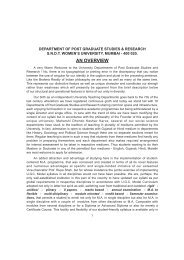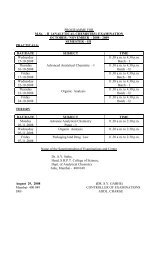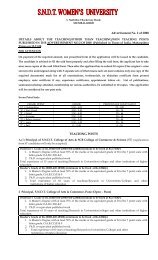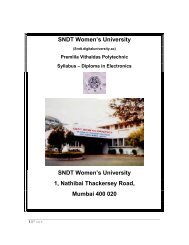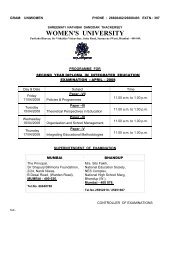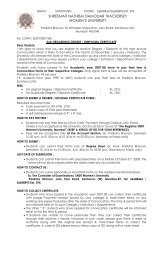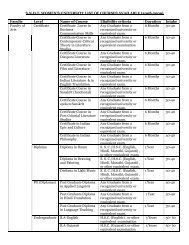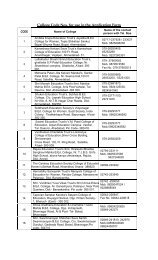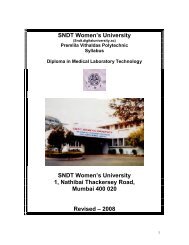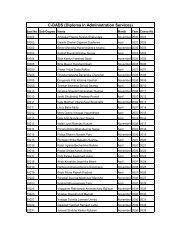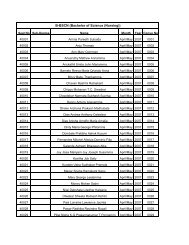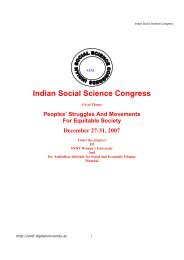XXXI Abstracts Part 1 page 1-189
XXXI Abstracts Part 1 page 1-189
XXXI Abstracts Part 1 page 1-189
You also want an ePaper? Increase the reach of your titles
YUMPU automatically turns print PDFs into web optimized ePapers that Google loves.
that go to constitute it; that is, to put it in a technical language, qualities within a boundary constitute an identity. It is the<br />
ordering and shape of qualities (or attributes) due to which we could make identification of X caste as distinct from another<br />
Y caste. If this is tenable, as it seems to me to be, then the position looks like this: that what have always been identified as<br />
castes from pre-Moghul times on, can no longer be re-identified as the castes in 2000 on when we are looking at this<br />
phenomenon. I think that the question of re-identification is of central importance in the specification of an entity-- object,<br />
person, or collectivity—- as the same identity. Because identity depicts persistence in time, and through a historical process,<br />
therefore for X to be the same identity at two points of time (T1 and T2) it should be capable of being re-identified at T2 as X<br />
as it was at T1.<br />
This no longer seems to be the case. Because all the particulars, qualities or attributes, which went into the<br />
constitution of castes-jatis have become discontinuous; that is, non-persistent, a bit of it may be here and a bit there but as<br />
continuous wholes they are missing. It is difficult to refer to these as the same entity. If this is so, then these cannot be the<br />
same identities. I would like to argue that these entities have much rather become like “communities”. This is somewhat<br />
analogous to the way that the Italians or Polish or Irish were vis-à-vis the WASP—- the disadvantaged and the privileged<br />
who faced each other in the democratic process -- in USA during the period of what is now called the “melting pot”. What<br />
does then remain of the caste? What do we make out of the role of oppressed castes in politics?<br />
Let me begin with a cautionary note. Many features of social forms existing for long historical duration do not get<br />
obliterated even when they change their social character drastically. Perhaps these might be destroyed through<br />
revolutionary or severe reactive violence. We will have to look into a two-way trend to understand what really is happening<br />
to the castes.<br />
The more simply, visible trend first. As social forms these survive while losing much of the inner content. Many of<br />
the oppressed castes either re-christened themselves to make self-references suggesting self-respect, pride and so on. But<br />
none of the oppressed castes refer to themselves in terms of the order of the varna system, as inferior, unclean, in ritual<br />
dependence, etc. Some features of social exchanges continue in the form of marriage but even this is no longer fixed but is<br />
both expanding as circles of endogamy or inviting ideological revulsion even if the same people cannot do much in actual<br />
practice. Much of jajmani system no longer survives and so too the entitlements based on it. Wage labour has replaced<br />
much of the ritual dependence with economic dependence where with the dalits the element of coercion and, many a times,<br />
brutality also works in keeping entitlements low. The rural economy is itself drawn into the market networks and works as a<br />
part of the interacting economic system. Is caste now merely superstructure? may not be the best way of approaching this.<br />
The highly contrary forms of capitalist economic power also determine outcomes. But what is clear is that the inner<br />
mechanisms of the varna order, as an ideological system, do not function. So at this level it is best to leave it with a<br />
description without imposing a categorial classification.<br />
The other trend, which is thoroughly changing the character of the oppressed caste, is far more complicated. It is<br />
based on the internal differentiation and class formation. Two things were happening within these vulnerable communities.<br />
First there was a long period of capitalist development, especially in agriculture, which was followed by land reforms, after<br />
Independence. Many of the OBC’s became propriety peasants. The long chain of dependence and bondage was snapped.<br />
Education, employment, etc. among OBC's slowly expanded. New modern classes were slowly emerging. Among the Dalits<br />
reservations as quotas in education and employment and other meekly implemented affirmative action also led to similar<br />
results though on a much smaller scale. What thwarted the collective development of Dalits was the nature of land reforms<br />
where land often did not go to the direct tiller. Most of the Dalits remained dispossessed of land.<br />
As a consequence of all this, class and income differentiation have been taking place, however uneven, among these<br />
castes-communities and therefore a dispersal of earlier forms of power with their traditional leadership. Earlier such castes<br />
organised as Jatis were internally egalitarian because of the same occupation and skill endowment and therefore similar<br />
income levels. The break down of the inviolable links between the ritual status and occupation had far reaching consequences.<br />
It encouraged the movement of people, imperceptible though among the oppressed unlike with the Sawaranas earlier, into<br />
different occupations and the acquisition of varied and dissimilar skills. With all these developments, jatis started becoming<br />
internally inegalitarian; the process though has had a different tempo across the distinct castes leading to the formation of<br />
modern classes within the caste communities. Differentiation and dispersion of inherited bases of power, if we go by the global<br />
pattern of consequences of capitalist development, also sets in process the dissolution of the "primordial" communities.<br />
Nothing of the sort has happened in India so far nor seems likely to in the near future even with the rapid individuation of<br />
interests and persons.


